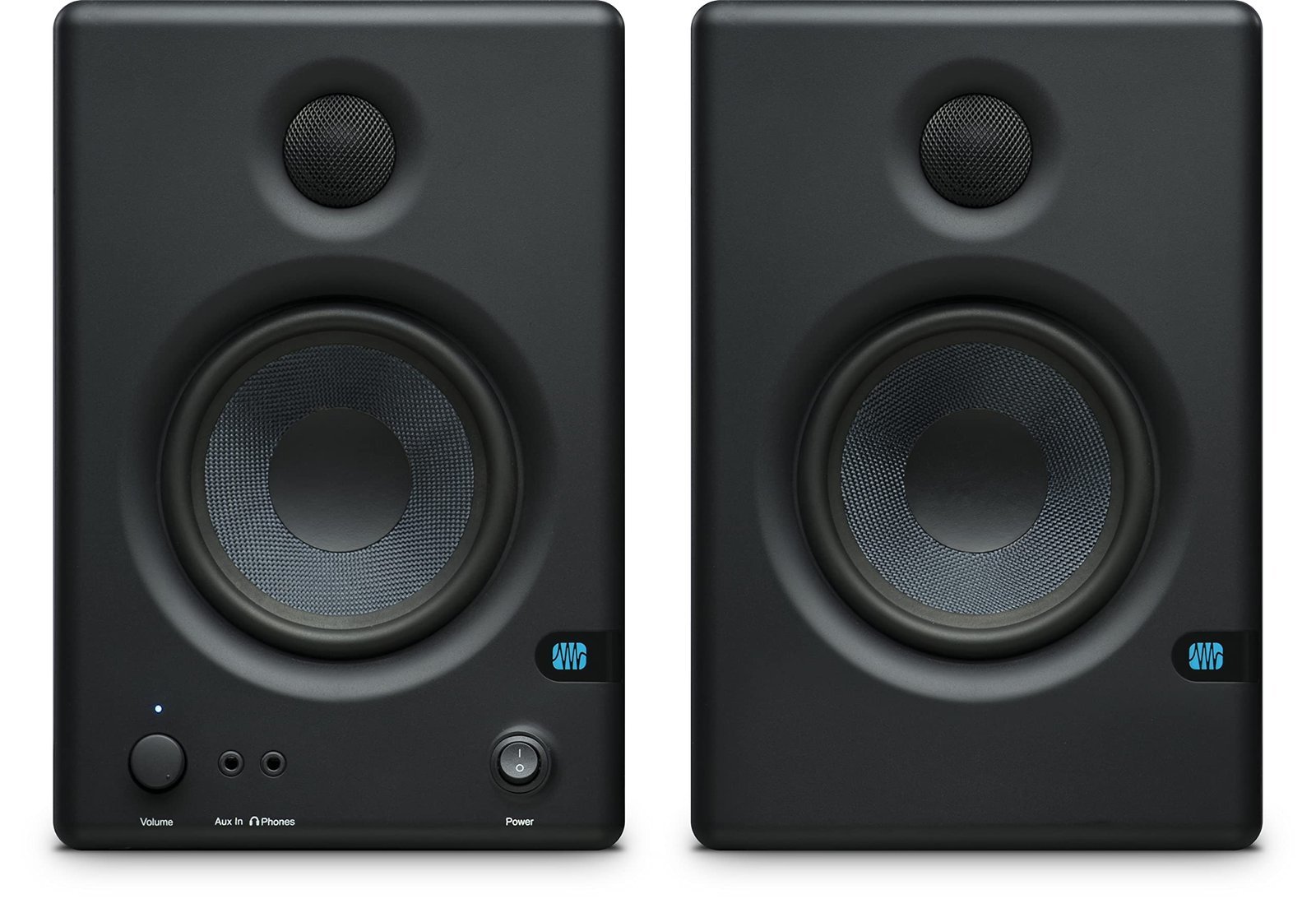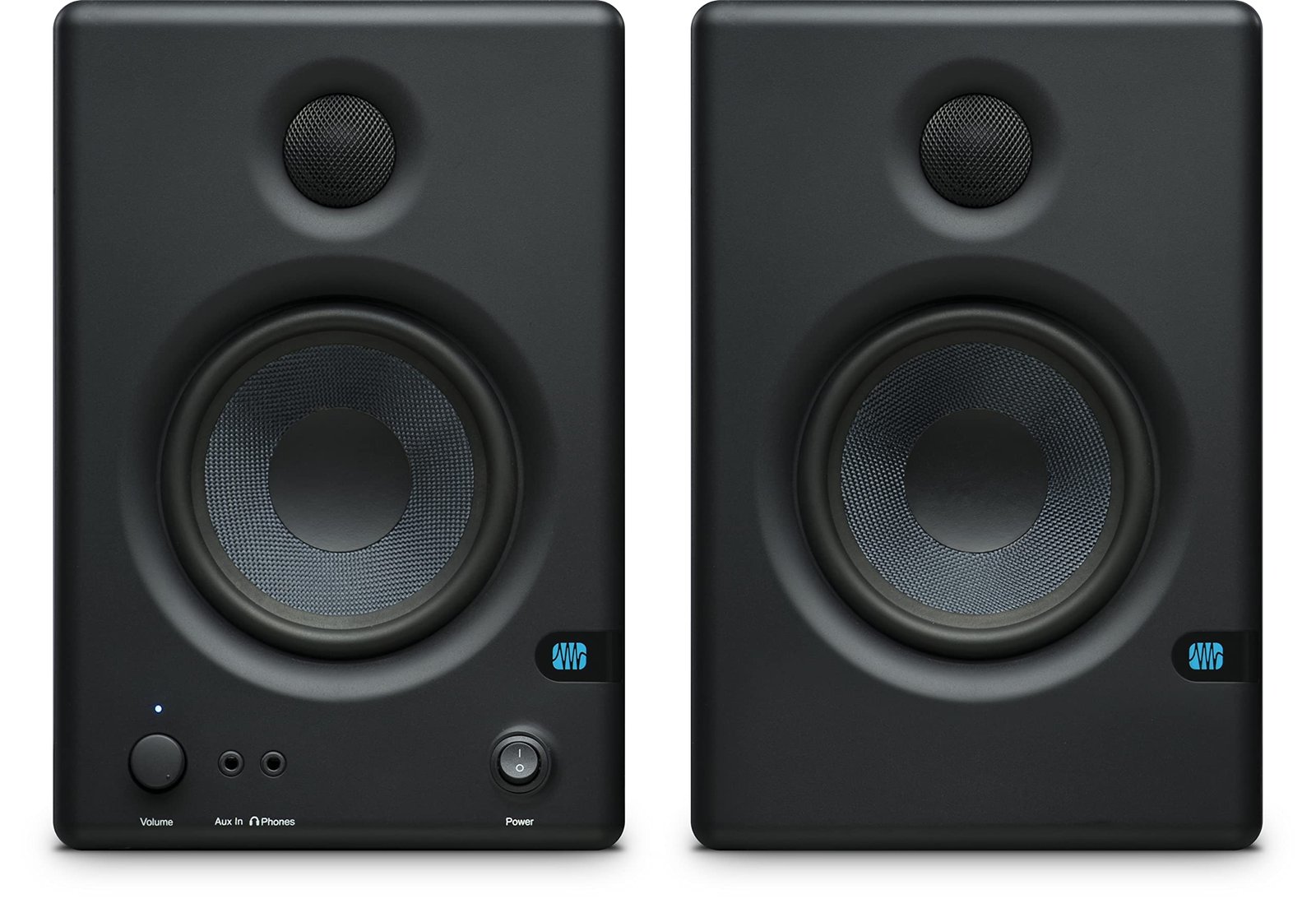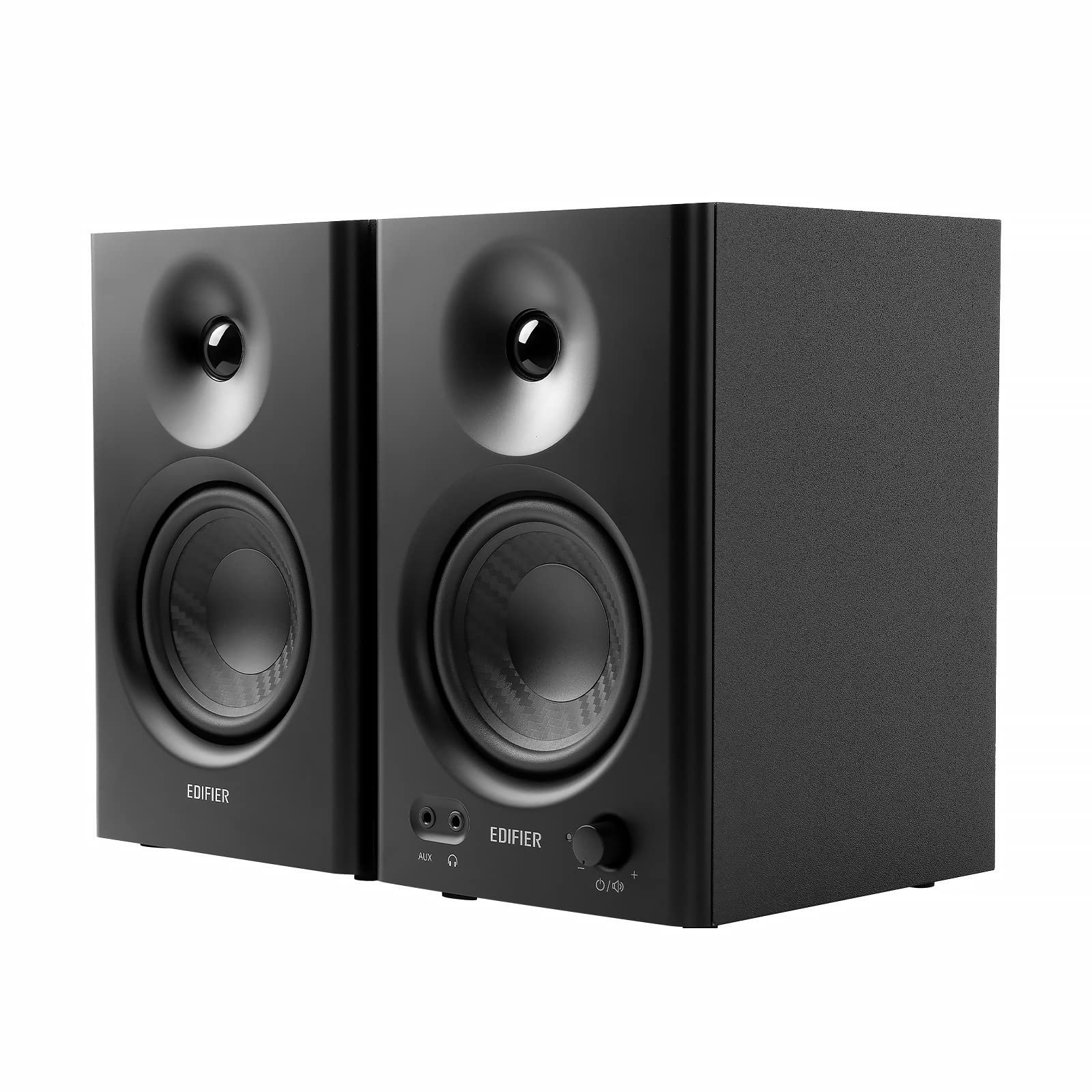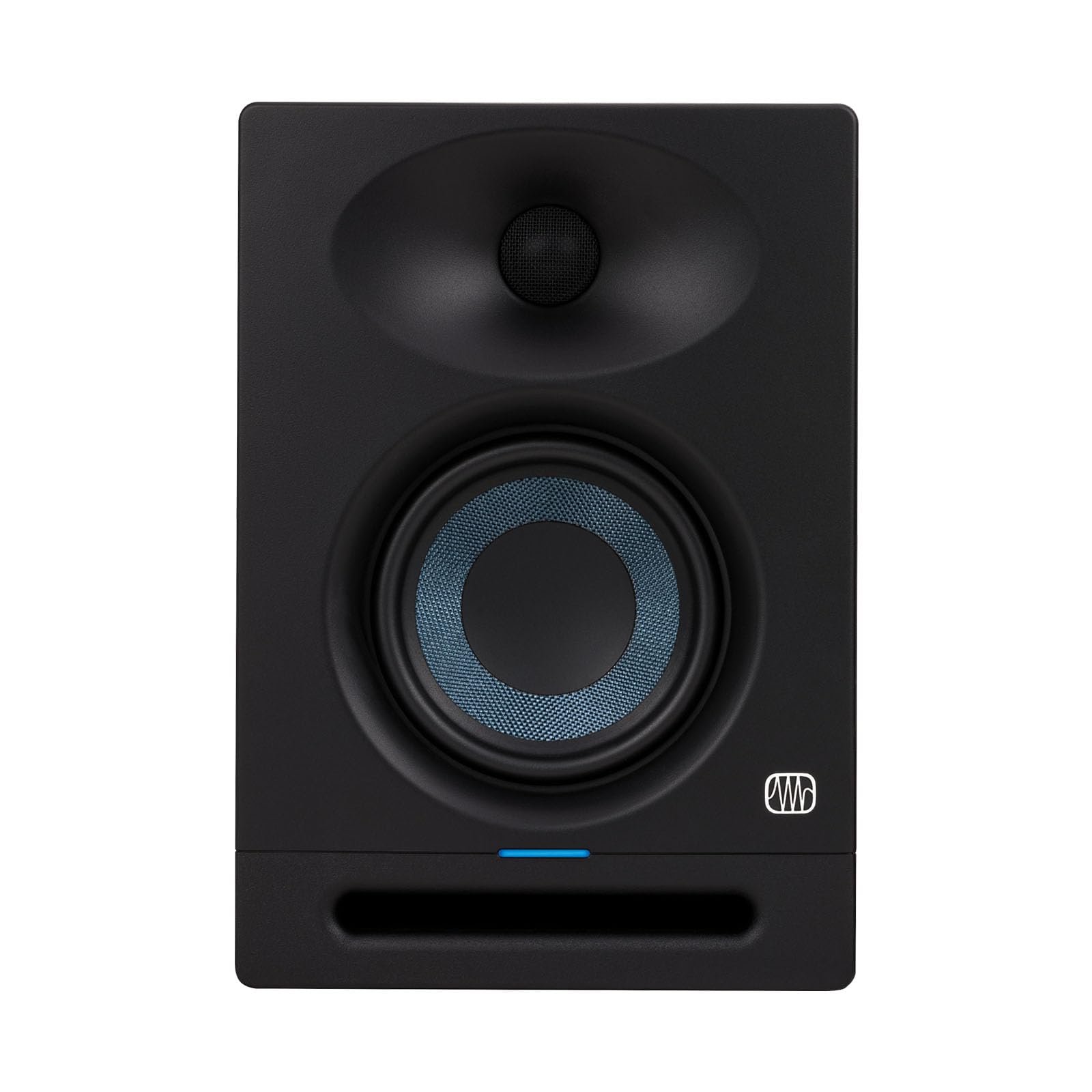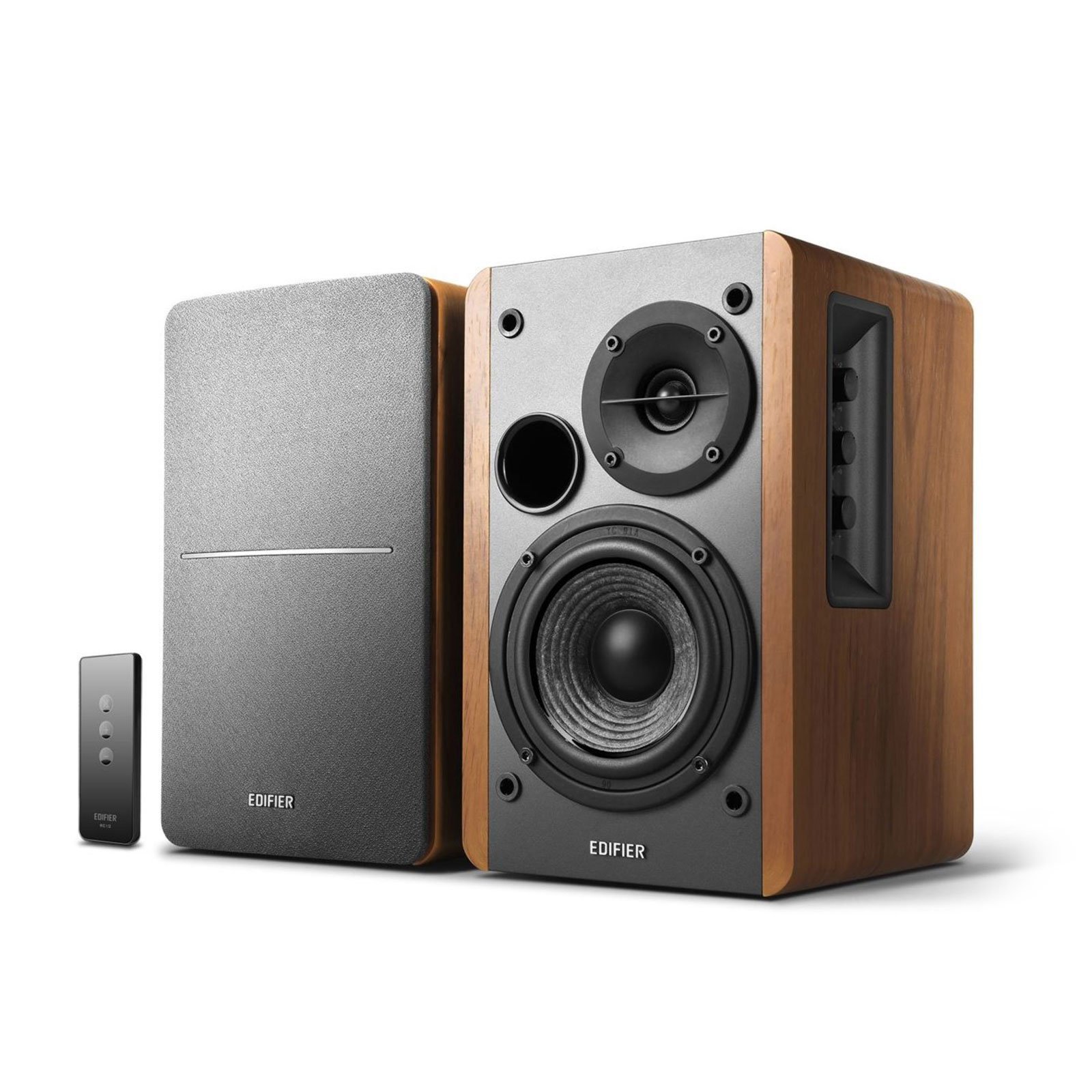When you’re setting up a studio, you need studio monitors to ensure sound clarity and precision.
That’s where studio monitors come in—specifically, mid-field studio monitors.
Mid-field studio monitors are designed to be placed a bit farther from your listening position than near-field monitors.
This means they can fill larger rooms with balanced sound.
They bring out details in your mixes, helping you catch imperfections before the final cut.
Mid-field monitors are a step up when it comes to power and sound dispersion.
Their ability to deliver accurate sound over a wider range makes them ideal for professional spaces.
The extra distance allows for better integration with the room’s acoustics, giving you a more immersive listening experience.
Just remember that proper placement and calibration can significantly enhance their performance, ensuring you get the most out of your investment.
As you consider purchasing mid-field studio monitors, focus on factors like size, frequency response, and build quality.
The size of the monitor should suit your room dimensions, while the frequency response should cover the full spectrum of sound you work with.
Pay attention to durability, as a robust build often means more consistent performance over time.
With these considerations in mind, you’ll be better equipped to select monitors that suit your needs and enhance your audio projects.
Top Mid-Field Studio Monitors
You’re in the market for some stellar mid-field studio monitors that deliver clear and accurate sound.
Your hunt stops here as we’ve gathered the best options available to help you create the perfect mix in your studio.
PreSonus Eris E4.5 Studio Monitors
These studio monitors deliver impressive sound quality in a compact form, making them a valuable addition to any setup for music enthusiasts and content creatives.
- Offers studio-quality sound in a compact design.
- Adjustable high- and low-frequency controls.
- Convenient front-panel inputs and controls.
- Might lack the deep bass some genres require.
- May be too compact for larger spaces needing bigger sound.
- Rear bass port could require specific placement for optimal sound.
PreSonus Eris E4.5 monitors are a solid pick for those who appreciate clear and accurate audio.
Their compact nature means they can fit into smaller spaces, yet they don’t compromise on sound quality.
These monitors come with several front and rear panel inputs, which provide flexibility for connecting various devices.
Front-panel controls make it easy to adjust volume or plug in headphones quickly.
Additionally, the high- and low-frequency tuning options help you tailor the sound to match your room’s acoustics.
Whether you’re mixing a new track or simply enjoying your favorite playlist, these monitors stand ready to deliver.
While the sound is generally well-rounded, those who crave deep bass may want to explore additional subwoofer options.
Proper placement is also important to avoid any sound distortion due to the rear bass port.
Nonetheless, for those with space limitations, these monitors blend performance with practicality effectively.
Edifier MR4 Studio Monitor Speakers
The Edifier MR4 Studio Monitor Speakers offer a blend of style and studio-quality sound that makes them a worthwhile investment for aspiring music creators.
- Smooth and clear audio quality
- Versatile connection options
- Dual-mode functionality for different listening needs
- Lack of deep bass
- Not suitable for large rooms
- Remote control not included
Aimed at artists and music creators, the Edifier MR4 Studio Monitor Speakers are specially designed to deliver accurate sound.
These monitors have been fine-tuned for a near-flat responsive curve, ensuring that you can hear your music as intended.
These speakers provide a variety of connection options, allowing you to connect easily to a wide range of devices like mixers, computers, and tablets.
Whether you need these for professional use or just for personal entertainment, the speakers handle your needs quite well.
Switch between monitor mode for music creation and music mode for relaxation, making these monitors flexible in function.
Easy volume and sound mode adjustments are available through a convenient front-panel knob.
The design decisions behind these features reflect the thoughtfulness put into the product’s usability and versatility.
PreSonus Eris Studio 4
A solid choice for your studio, these monitors offer sonic precision and flexible controls, perfect for both home and professional settings.
- Offers detailed sound quality with precise controls.
- Compact size fits in small studios with ease.
- Wide stereo imaging creates an immersive experience.
- Bass response might overpower in compact spaces.
- Volume levels may limit larger rooms.
- Slight learning curve for tuning controls.
The PreSonus Eris Studio 4 impresses with its compact design and audio clarity.
You’ll appreciate the dynamic range these monitors offer, particularly the crisp high frequencies due to the silk-dome tweeter.
Ideal for small mixing spaces, the sound remains accurate and involving, making it easier for you to nail the perfect mix.
You’ll find the adjustable controls handy for customizing sound according to the room’s acoustics.
This flexibility allows you to tweak the output, which is helpful if your studio setup changes or you move the monitors around.
Connectivity is versatile too, with multiple options, simplifying integration into different studio setups.
These monitors shine in home studio environments, especially if you’re looking for strong imaging capabilities.
While the bass might feel a bit dominant at close range, careful placement and usage of the acoustic tuning controls can help balance the audio output effectively.
Edifier R1280T Speakers
Affordable and reliable, the Edifier R1280T speakers offer great value for those seeking enhanced audio without breaking the bank.
- Versatile connectivity options with dual AUX inputs
- Classic wood design complements various decors
- Easy-to-use remote and side panel controls
- Limited low-end bass response
- Lacks wireless connectivity features
- Not suitable for larger spaces
These Edifier R1280T speakers are a solid choice if you’re looking for reliable desktop speakers with a classic aesthetic.
The natural sound quality ensures crisp audio, making it perfect for home entertainment or computer setups.
Its wood finish not only looks elegant but also blends seamlessly into a variety of home environments.
One standout feature is the versatility in connection.
With dual AUX inputs, you can readily connect multiple devices without the hassle of frequent plugging and unplugging.
The accompanying remote control and side panel adjustments for bass and treble provide a flexible listening experience tailored to your preferences.
While the Edifier R1280T excels in many areas, it’s important to note its limitations.
The bass might not shake your room, making it less ideal for bass enthusiasts.
Additionally, without Bluetooth, it’s not geared towards those seeking a wireless setup.
Despite these minor drawbacks, these speakers remain a popular choice due to their affordability and reliable performance.
JBL 305P MkII Studio Monitors
Great choice for both budding producers and seasoned professionals, combining superb audio clarity with reliable performance.
- Clear and precise audio imaging
- Wide sweet spot for versatile listening
- Rugged build designed for durability
- Might be overwhelming for very small rooms
- Bass may need fine-tuning
- Power cord may be slightly short for some setups
These JBL 305P MkII studio monitors provide impressive clarity and image control, ensuring you catch every detail in your projects.
The wide sound area lets you perfect your mix, even when you’re off-center.
The quality construction gives you peace of mind for long-term use.
For those working in medium to large spaces, the monitors deliver solid bass performance.
Some users may need to tweak the high-frequency trim for the best results in smaller rooms.
If you need extended low frequencies, consider adding a subwoofer.
Easy setup with flexible connectivity lets you integrate these monitors into your existing setup seamlessly.
Once in place, you’ll likely appreciate the solid performance and reliability that JBL is known for.
Investing in proper stands can help optimize the listening experience even further.
Buying Guide
Choosing the right mid-field studio monitors can greatly enhance your audio production experience.
With so many options available, it’s important to consider key features that match your needs.
Key Features to Consider
- Frequency Range: Look for monitors with a wide frequency response to catch all the nuances in your music.
- Power Output: Ensure the monitors have enough power to fill your room without distortion.
- Size and Space: Consider the size of your space. Mid-field monitors are larger, so ensure they’ll fit comfortably in your setup without excessive clutter.
Placement and Acoustics
Proper placement is crucial.
Position the monitors at ear level, ideally forming an equilateral triangle with your listening position.
Consider acoustic treatment in your room to minimize reflections and enhance sound clarity.
Connectivity
Check for multiple input options like XLR, TRS, and RCA.
This flexibility ensures you can connect to various audio interfaces.
Budget
Balance your budget against the features you need.
Sometimes spending a bit more can get you better clarity and longevity, making it worthwhile.
Checklist
| Feature | Importance |
|---|---|
| Frequency Range | High |
| Power Output | High |
| Connectivity | Medium |
| Build Quality | Medium |
| Design and Size | Variable |
Frequently Asked Questions
Midfield studio monitors play a critical role in achieving accurate sound representation.
Setting them up correctly and understanding their specifications helps in enhancing the quality of your audio work.
How do I set up midfield studio monitors in my space?
Position your midfield monitors on stands or a solid surface, ensuring they’re at ear level and form an equilateral triangle with your listening position.
Make sure there is space behind them for proper bass response, ideally 1 to 2 feet away from walls.
What are some tips for mixing with midfield monitors?
Use reference tracks to familiarize yourself with how your monitors translate sound.
Regularly check your mixes at various volume levels and from different room positions.
Take breaks to avoid ear fatigue and ensure you’re making sound decisions.
Can you compare the sound quality of midfield monitors versus far-field monitors?
Midfield monitors offer a balanced sound suitable for medium-sized spaces, providing detailed audio at moderate distances.
Far-field monitors cater to larger rooms and produce a more enveloping sound.
They need more space to breathe and can handle louder volumes without distortion.
What’s the ideal listening distance for midfield monitors in a home studio?
Typically, place your midfield monitors around 3 to 6 feet from your listening position.
This distance helps in capturing balanced stereo imaging and frequency responses.
Adjust based on room size and acoustics for best results.
Are there specific midfield monitor brands that professionals prefer?
Some popular brands among professionals include JBL, KRK, and Yamaha.
Each offers unique strengths in terms of clarity, frequency response, and build quality.
Trying out different models is often recommended to find the best fit for your personal needs.
How important is room treatment when using midfield studio monitors?
Room treatment is crucial in managing reflections and standing waves, especially with midfield monitors.
Use bass traps, diffusers, and absorbers to improve accuracy.
These elements help create a controlled listening environment, ensuring your monitors perform optimally.

